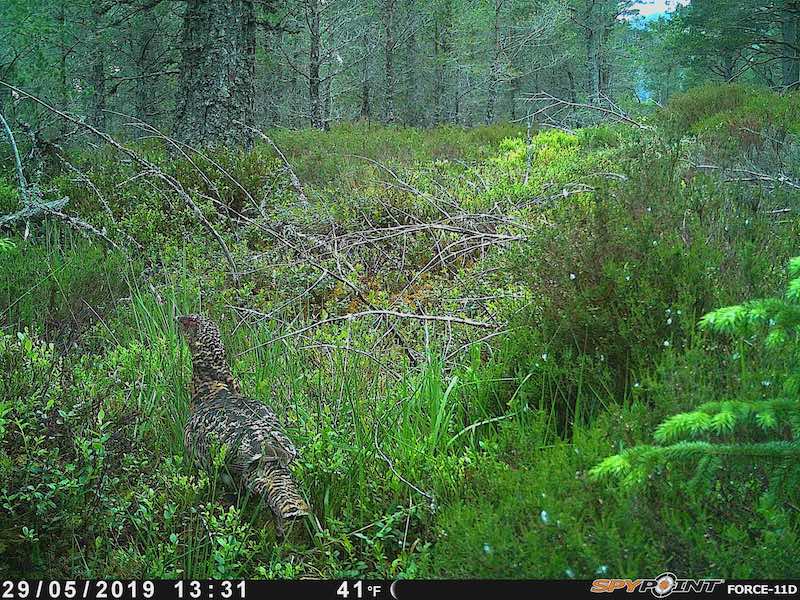Pictured: Female Capercaillie returning to nest captured on trail camera.
A recently published study into the breeding and dispersal of Capercaillie in Strathspey undertaken over four years from 2016 – 2019 has concluded that without further managed landscape scale intervention to improve breeding success it is likely that the already threatened species will continue to decline.
The study Observations on breeding and dispersal by Capercaillie in Strathspey was undertaken by scientists from the Game & Wildlife Conservation Trust (GWCT), and co-funded by Scottish Natural Heritage (SNH), Scottish Forestry (formerly Forestry Commission Scotland), Forestry and Land Scotland (formerly Forest Enterprise Scotland) and the Cairngorms National Park Authority.
The Scottish Capercaillie has been declining in range and numbers since the 1970s, and now there may be less than 1000 birds remaining, chiefly in Strathspey.
This latest study involving the radio-tagging of 6 females allowed 12 possible breeding attempts to be followed.

Pictured: Pine marten close to nest carrying a capercaillie egg, captured on trail camera.
Nine clutches were laid of which six then hatched, with three probably predated by pine martens.
Of the six broods, only two fledged chicks, a chick survival rate of just 8%.
The low chick survival could be due to predation, poor post-hatch weather or impacts of sheep tick, but these all require further study.
Dispersal distances of the tagged birds ranged from 3.5 km to 16.3 km highlighting the importance of conservation action across neighbouring forests and at landscape scale.
Dr Kathy Fletcher, Senior Research Assistant, Scottish Upland Research, GWCT, who with Dr Dave Baines, GWCT Director of Upland Research, co-authored the study, says:
“This study highlights just how low capercaillie breeding success is now in the heart of its range.
“If we wish to have any chance of stabilising numbers, it will require further studies that focus on why chick survival is so low, with subsequent management interventions at landscape scales.”



